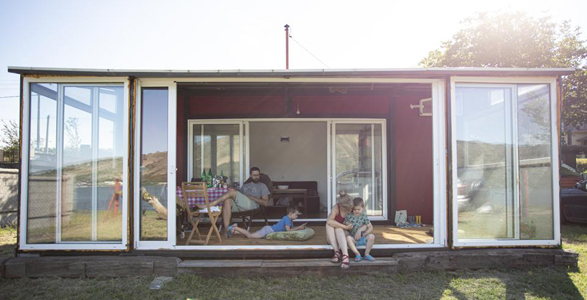Simon deMaid, Partner and employment law expert at Howes Percival
Law firm answers Covid-19 vaccination questions for employers
Leading law firm Howes Percival is urging companies to consider the risks of adopting a blanket ‘no jab, no job’ employment policy.
Currently, vaccination against COVID-19 is not compulsory, with the Government leaving it up to businesses to decide the ethics and feasibility of mandatory vaccination policies in their workplace. After months of lockdown restrictions, companies will be eager to reassure customers and clients that they operate a ‘COVID-19 safe’ environment. However, Howes Percival is warning employers to tread carefully and obtain specific legal advice regarding the implementation of any workplace vaccine policies.
Issues regarding vaccination will be specific to each employers’ circumstances, their business sector, and the individual circumstances of their employees. While employers are entitled to suggest that staff get vaccinated, if an employee refuses, great care needs to be taken to avoid potential discrimination claims.
Simon deMaid, Partner and employment law expert at Howes Percival commented, “While the need for vaccination policies in the workplace may seem premature. The expected trajectory of the vaccination rollout will lead to more instances of employers asking for or even requiring employees to receive the vaccine.”
“There are still many unknowns about COVID-19 and the vaccinations. Depending on the science, wide-scale vaccination may not be an all-encompassing solution for a return to “normality” or a pre COVID-19 workplace environment. The vaccines have been shown to be effective at reducing or eliminating symptoms and effects of COVID-19, what is less known is the extent to which they prevent transmission (although the early data is encouraging) or the period of immunity. This raises concerns about the feasibility of employers requiring vaccination, and highlights questions about the effectiveness of these polices in reducing risk to employers, employees, and customers.”
Should employers introduce a “no jab, no job” vaccination policy?
Ultimately, it is a commercial decision for each employer to take based on the level of risk they are prepared to take. However, employers should bear in mind that, a “no jab, no job” policy is too simplistic an approach for most companies because it does not take into account many of the current vaccine ‘unknowns’. Existing employees may have medical clauses in their contracts, which could include a requirement to have a vaccination. If not, employers may take steps to implement a vaccination policy or contractual clause. It may also be possible to have a ‘no jab, no job’ policy for job applicants to any new role. Although, this does not come without employment law risks, specifically discrimination.
Can an employer compel an employee to take the vaccine?
In short, no. Employers cannot physically force or compel employees to take a COVID-19 vaccine. At this stage, rather than relying on compulsory vaccination, employers may wish to focus on how best to educate employees and publicise the benefits of taking the vaccination.
Can employers require employees to have a vaccine on health and safety grounds?
Employers are required to reduce workplace risks under the Health and Safety at Work Act 1974 and should continue to follow COVID-secure guidance regardless of vaccination status. Requiring employees to take the vaccine on grounds of health and safety law would require employers to prove that vaccination protects other employees, and the third parties they encounter. Although early data is showing a reduction in transmission this issue is yet to be resolved. At this stage, relying on health and safety law is likely to be risky.
Can an employer dismiss an employee for refusing a vaccine?
In theory, yes, however, whether the dismissal is fair or not will depend on the individual circumstances. If the request to be vaccinated is reasonable, an employee’s unreasonable refusal to comply could result in disciplinary action. Whether a request is reasonable will depend on the circumstances of the individual employee; the employer’s business and the sector they operate in. For example, it will be more reasonable to require frontline health care workers to have the vaccine, compared to fully remote office workers.
How can employers avoid unfair dismissal claims?
For a dismissal to be “fair”, it must fall under one of the five potentially fair reasons for dismissal. The most likely justification for dismissing an employee will be “conduct” for failure to comply with a reasonable request. Alternatively, dismissal might be for “some other substantial reason”. Due to the complex issues involved, employers should take specific legal advice on any disciplinary or dismissal relating to employees who refuse the vaccine.
What is the risk of discriminating against employees who refuse the vaccine?
There is a risk that employers could be accused of discrimination if they insist on employees, or job applicants, being vaccinated. There are several potential ‘protected characteristics’ that an employee may seek to rely on to justify a refusal to take the vaccination and consideration will need to be given to the rights of individual employees and whether there are health reasons, religious or philosophical beliefs that mean vaccination is not appropriate.
Can employers ask an employee if they have had the vaccine?
Yes, however, the vaccination status of an employee is private health information, which is a ‘special category of data’ (that requires extra protection under GDPR). Use of this data must also be fair, necessary, and relevant for a specific purpose. Any reason for recording employees’ vaccination status must be clear and compelling. To process the data fairly and lawfully, employers will need to rely on one of the permitted grounds for doing so. The sector, type of work and specific workplace health and safety risks will help employers decide if they have compelling reasons to collect employees COVID-19 vaccine records.
For more information on COVID-19 and employment law visit:




